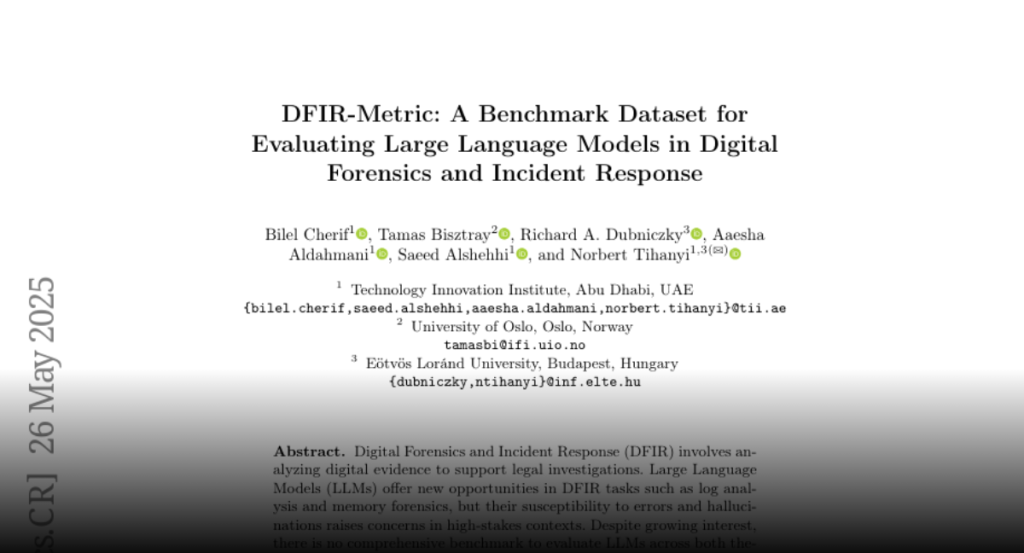DFIR-Metric evaluates Large Language Models for digital forensics using a comprehensive benchmark with knowledge assessments, realistic forensic challenges, and practical analysis cases, introducing a Task Understanding Score for near-zero accuracy scenarios.
Digital Forensics and Incident Response (DFIR) involves analyzing digital
evidence to support legal investigations. Large Language Models (LLMs) offer
new opportunities in DFIR tasks such as log analysis and memory forensics, but
their susceptibility to errors and hallucinations raises concerns in
high-stakes contexts. Despite growing interest, there is no comprehensive
benchmark to evaluate LLMs across both theoretical and practical DFIR domains.
To address this gap, we present DFIR-Metric, a benchmark with three components:
(1) Knowledge Assessment: a set of 700 expert-reviewed multiple-choice
questions sourced from industry-standard certifications and official
documentation; (2) Realistic Forensic Challenges: 150 CTF-style tasks testing
multi-step reasoning and evidence correlation; and (3) Practical Analysis: 500
disk and memory forensics cases from the NIST Computer Forensics Tool Testing
Program (CFTT). We evaluated 14 LLMs using DFIR-Metric, analyzing both their
accuracy and consistency across trials. We also introduce a new metric, the
Task Understanding Score (TUS), designed to more effectively evaluate models in
scenarios where they achieve near-zero accuracy. This benchmark offers a
rigorous, reproducible foundation for advancing AI in digital forensics. All
scripts, artifacts, and results are available on the project website at
https://github.com/DFIR-Metric.

